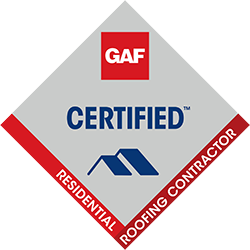Dealing with roof damage can be stressful, especially when it comes to filing an insurance claim. Whether your roof has been damaged by a storm, fallen debris, or other unforeseen events, understanding the roofing insurance claim process is crucial to ensuring you get the coverage you deserve. If you’re a homeowner in Atlanta, this guide will walk you through each step of the process, making it easier to navigate and ultimately secure the necessary repairs or replacement for your roof.
Step 1: Assess the Damage
The first step in the roofing insurance claim process is to assess the extent of the damage. After a storm or other damaging event, take a close look at your roof to identify any visible issues, such as missing shingles, dents, or leaks. It’s essential to act quickly, as insurance companies often have time limits on filing claims after an incident.
- Pro Tip: Avoid climbing onto the roof yourself if it’s unsafe. Instead, conduct a visual inspection from the ground or hire a professional roofing contractor to assess the damage.
Step 2: Document the Damage
Once you’ve identified the damage, the next step is to document it thoroughly. Take clear, detailed photographs of all affected areas, including close-ups of damaged shingles, gutters, and any water stains inside your home. This documentation will serve as crucial evidence when filing your claim.
- Pro Tip: Include a written description of the damage, noting the date of the incident and any relevant details about the cause.
Step 3: Review Your Insurance Policy
Before filing a claim, it’s important to review your homeowner’s insurance policy to understand what is covered. Pay attention to the specifics of your policy, including deductibles, coverage limits, and any exclusions. Knowing what your policy covers will help you set realistic expectations for the claim process.
- Pro Tip: If you’re unsure about your coverage, contact your insurance agent for clarification.
Step 4: Contact Your Insurance Company
After assessing and documenting the damage, contact your insurance company to initiate the claim process. Provide them with all necessary information, including details of the damage, photos, and any supporting documents. Your insurance company will likely assign an adjuster to your case who will schedule an inspection of your roof.
- Pro Tip: Keep a record of all communications with your insurance company, including emails, phone calls, and letters.
Step 5: Get a Professional Roof Inspection
While the insurance adjuster will inspect your roof, it’s also a good idea to have an independent roofing contractor, like Roofing Georgia, perform a thorough inspection. A professional contractor can provide a detailed report of the damage and an estimate for the repairs or replacement needed. This second opinion can be valuable if there’s any discrepancy between your contractor’s findings and the insurance adjuster’s report.
- Pro Tip: Choose a contractor with experience in working with insurance claims to ensure they can effectively communicate with the adjuster.
Step 6: Work with the Insurance Adjuster
The insurance adjuster’s role is to evaluate the damage and determine the payout for your claim. Be present during the inspection if possible, and ensure that the adjuster sees all the documented damage. If you have a roofing contractor, they can also be present to discuss the findings and provide additional insights.
- Pro Tip: Don’t be afraid to ask questions or seek clarification during the inspection. It’s important that you fully understand the adjuster’s assessment.
Step 7: Review the Claim Settlement
Once the insurance adjuster has completed their inspection, they will provide a settlement offer based on their assessment of the damage and your policy’s coverage. Review the settlement carefully to ensure it accurately reflects the cost of repairs or replacement. If the settlement is lower than expected, you can negotiate with the insurance company or provide additional documentation to support your claim.
- Pro Tip: If you’re unsatisfied with the settlement offer, consider hiring a public adjuster to advocate on your behalf.
Step 8: Complete the Repairs or Replacement
After accepting the settlement, it’s time to move forward with the repairs or replacement of your roof. Hire a reputable roofing contractor, like Roofing Georgia, to complete the work. Ensure that all repairs are done to a high standard, and keep records of the work performed for future reference.
- Pro Tip: Choose a contractor who offers a workmanship warranty to provide added peace of mind.
Step 9: Finalize the Claim
Once the repairs or replacement are complete, finalize the claim with your insurance company. Provide them with any required documentation, including invoices and proof of completion. Ensure that all payments are processed, and that your insurance company closes the claim to your satisfaction.
- Pro Tip: Keep copies of all claim-related documents for your records, as you may need them in the future.
Why Choose Roofing Georgia for Your Insurance Claim?
At Roofing Georgia, we have extensive experience in helping homeowners navigate the roofing insurance claim process. Our team is committed to providing expert guidance, quality repairs, and exceptional customer service every step of the way. We understand the complexities of dealing with insurance companies and are here to ensure that you receive the coverage you’re entitled to. If you’ve experienced roof damage and need assistance with your insurance claim, contact Roofing Georgia today. We’re here to help you protect your home and restore your roof with confidence.








